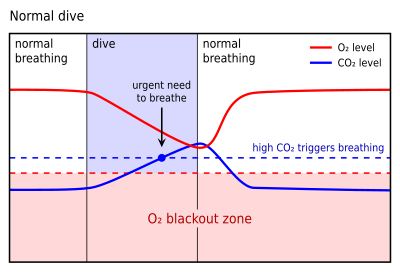Michele Brislen, widow of free diver Andrew Brislen, wants to educate people about the danger of shallow water blackout, which led to her husbands death near Lagunas Picnic Beach on May 26.
Although well understood by doctors, shallow water blackout is not well known by the public or even the free divers most likely to suffer from it, Brislen said this week in announcing her initiative.
My husband did junior lifeguards and swam and surfed and scuba dove, but shallow water blackout was not a part of his vocabulary. When you get certified for scuba, they dont talk about it. Thats for free diving, said Brislen, who is also certified for scuba.
A high school biology and life sciences teacher, Brislen seeks to change that by educating the public about its causes and prevention. She plans to teach through REEF, an organization of volunteer divers she already works with, and would like to team up with staff at the local dive shop Laguna Sea Sports, where her husband bought a fish stringer just before his fateful dive, as well as Nancy Caruso, organizer of kelp fest, and the local junior lifeguards.
I would like to sit down and talk to her. I think it would be worthwhile. It is something we are all very aware of as professionals, said Lagunas lifeguard Chief Kevin Snow, who added that shallow water blackout is part of the instruction given junior lifeguards when they begin snorkeling.
About 10 people drown in the U.S. every day, according to the National Center for Injury Prevention and Control. It is unclear how many of these drownings were preceded by SWB, largely because there is no way to know unless someone witnesses the event.
Most shallow water blackout cases are swept under the rug, said Tom Griffiths, president of Aquatic Safety Group and former Penn State water safety director. The coroners dont know a thing about it. Their only criteria for cause of death is water in the lungs for drowning. It has to be brought to the public.
Neal Pollock, research director for Divers Alert Network, has managed a database of breath hold incidents, most of which are fatal. Since 2004, there has been an average of 44 breath-holding deaths per year and Pollock believes over half the fatalities are due to SWB.
Its very unreported because there isnt a lot of physical evidence left (in fatalities). We simply try to educate people about the hazards and not worry too much about the body count. Most cases are fatal, but I want to collect non-fatal ones because those are the ones where we can get whole picture, Pollock said.
Andrew Brislen was free diving alone May 26 near Picnic Beach when he died as a result of drowning, according to a coroners report. Initial reports suggested kelp might have contributed to his death, but Brislen, an experienced diver, was found on the surface, and was almost surely a victim of shallow water blackout, a condition in which a diver is returning to the surface after holding their breath for an extended time in deeper water and loses consciousness suddenly, without warning. Once unconscious the diver drowns unless rescued quickly.
Brislen became more certain about the cause of death once she retrieved her husbands equipment from the different agencies involved. Initially, she was told her husband did not have a weight belt at the time of his rescue, a clue to his cause of death. Her brothers dove twice in an attempt to find it before learning it was in custody of officials. His dive watch, later recovered from authorities, let her know he did not die entangled in kelp.
Entanglement was not an issue. It just wasnt. I dove out there and you could come up anywhere you want, said brother in law Keith Rootsaert, safety officer for the Monterey Bay Sea Otters scuba diving club and a fish surveyor for REEF.
You can pass out with zero warning, absolutely none, said Pollock.
Shallow water blackout happens when a diver pushes their breath holding too deep or too long. At depth the pressure compresses the divers lungs, pushing oxygen to the rest of the body and brain. As the diver returns to the surface in need of air, the lungs expand, most greatly just before the surface. This reverses the oxygen pressure, sucking it out of the blood stream and back into the lungs. The oxygen starved brain then quickly shuts off, causing black out.
Divers often hyperventilate just before diving because it enables them to hold their breath longer, by getting rid of CO2 in the blood, which triggers the impulse to breathe. Hyperventilation before diving is very dangerous because the diver can easily stay down too long, using up all oxygen, and suffer shallow water blackout without the body giving off the typical warning signs that it needs air.
Brislen fit the model for SWB victims: he was fit, experienced, proactive diver. He would often call his brother in law, Rootsaert, to discuss their dive logs and safety strategy. Just a few months earlier, the two had done a dive that was Brislens first fish counting survey for REEF.
Laguna Beach lifeguards are trained about shallow water blackout, not allowed to descend deeper than 40 feet while free diving in a rescue, and are always accompanied by safety divers, according to Snow.






